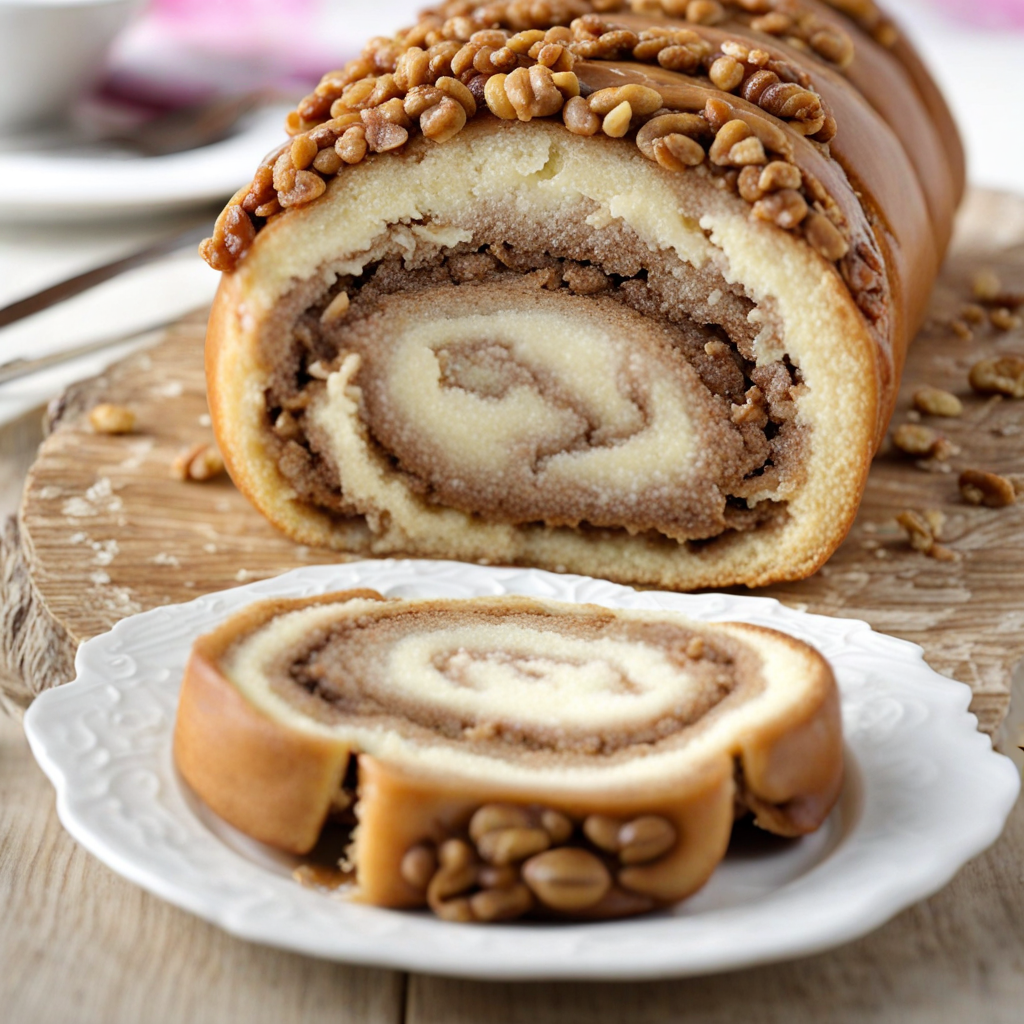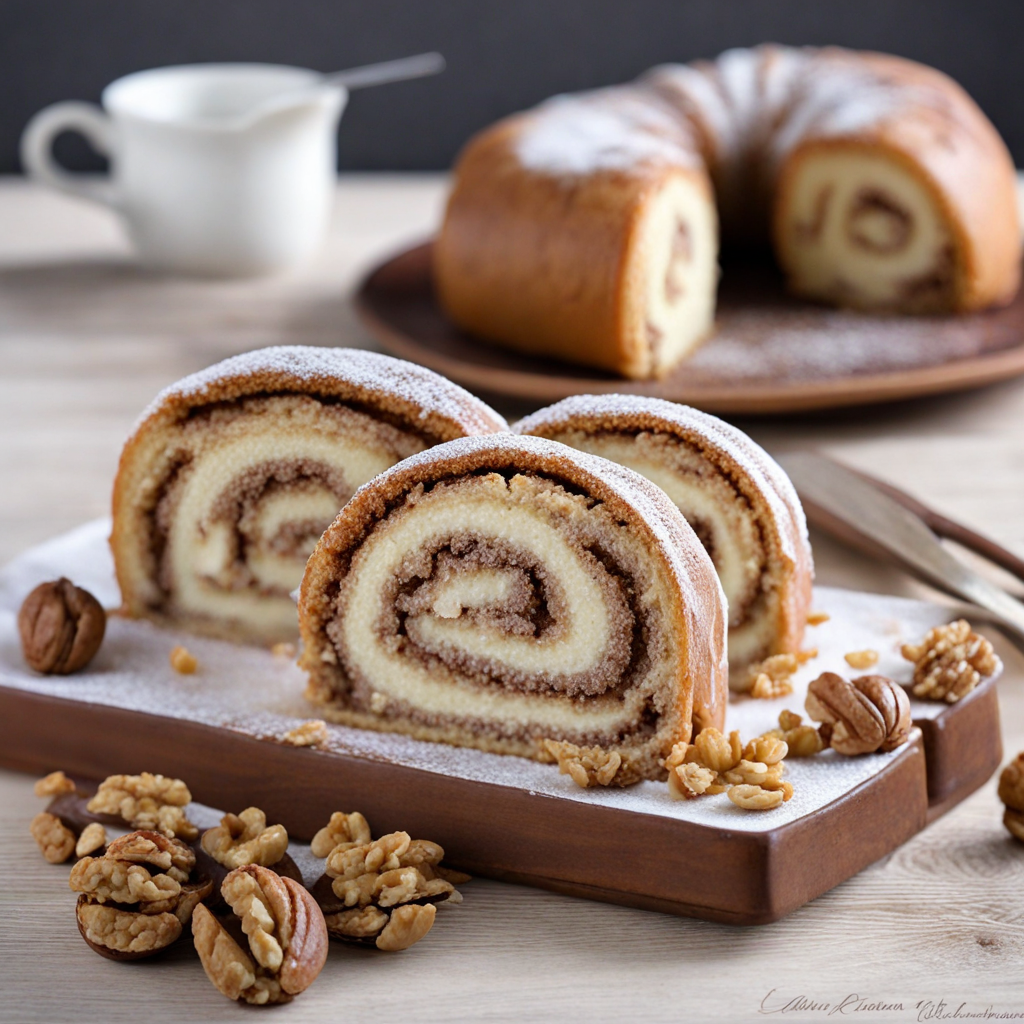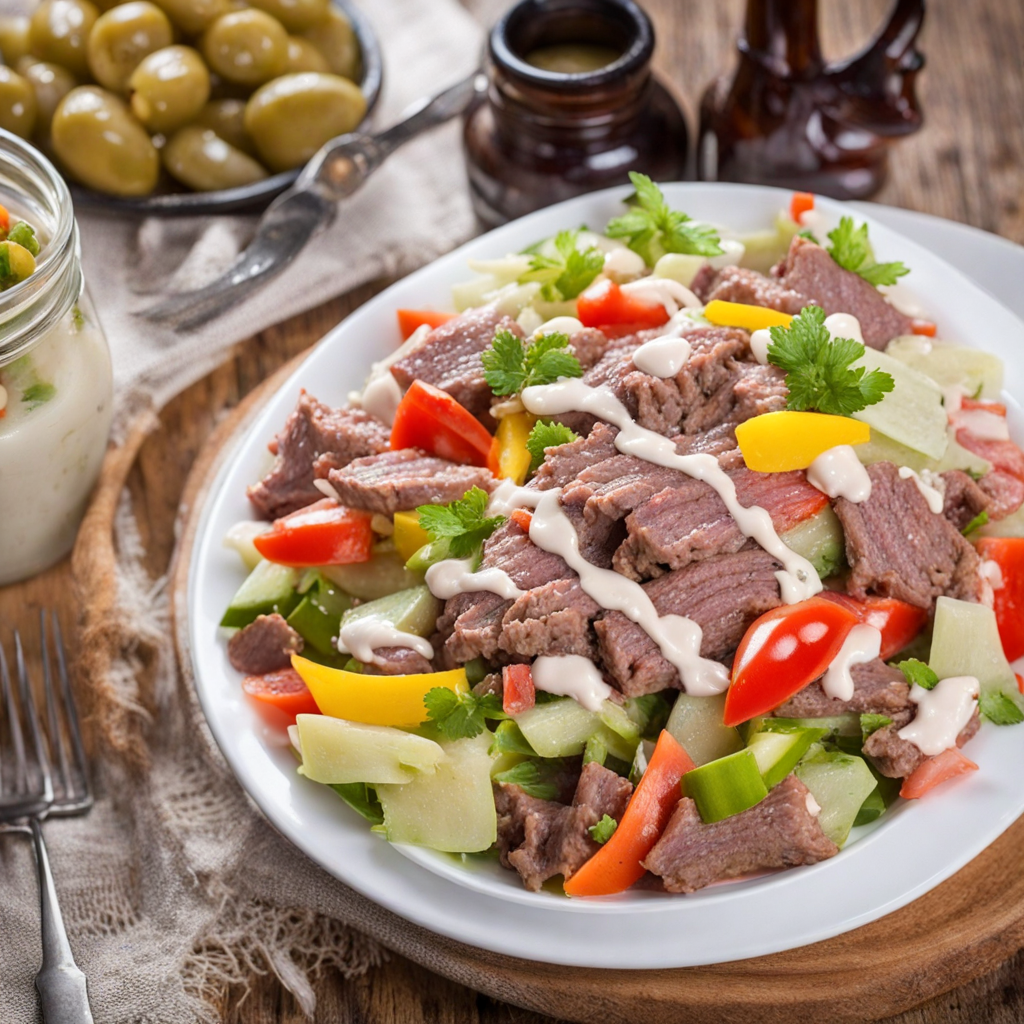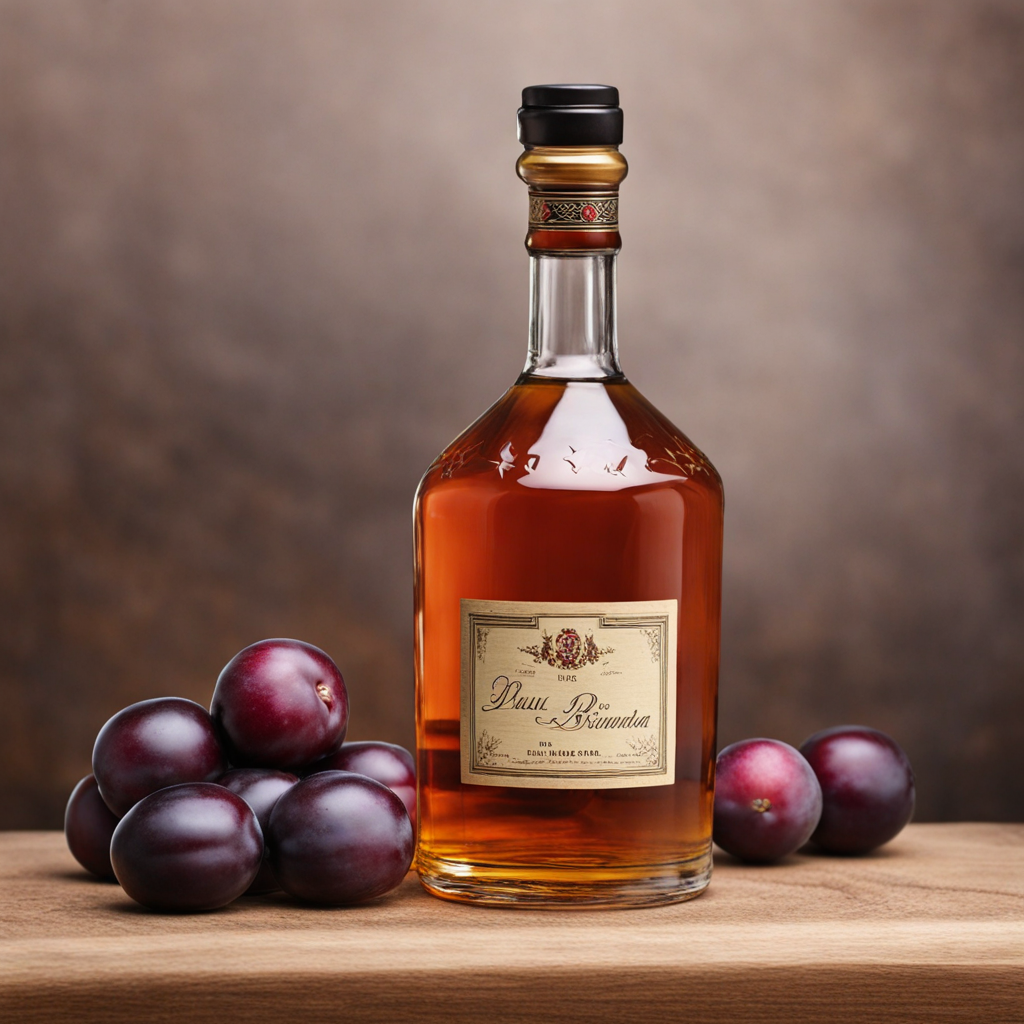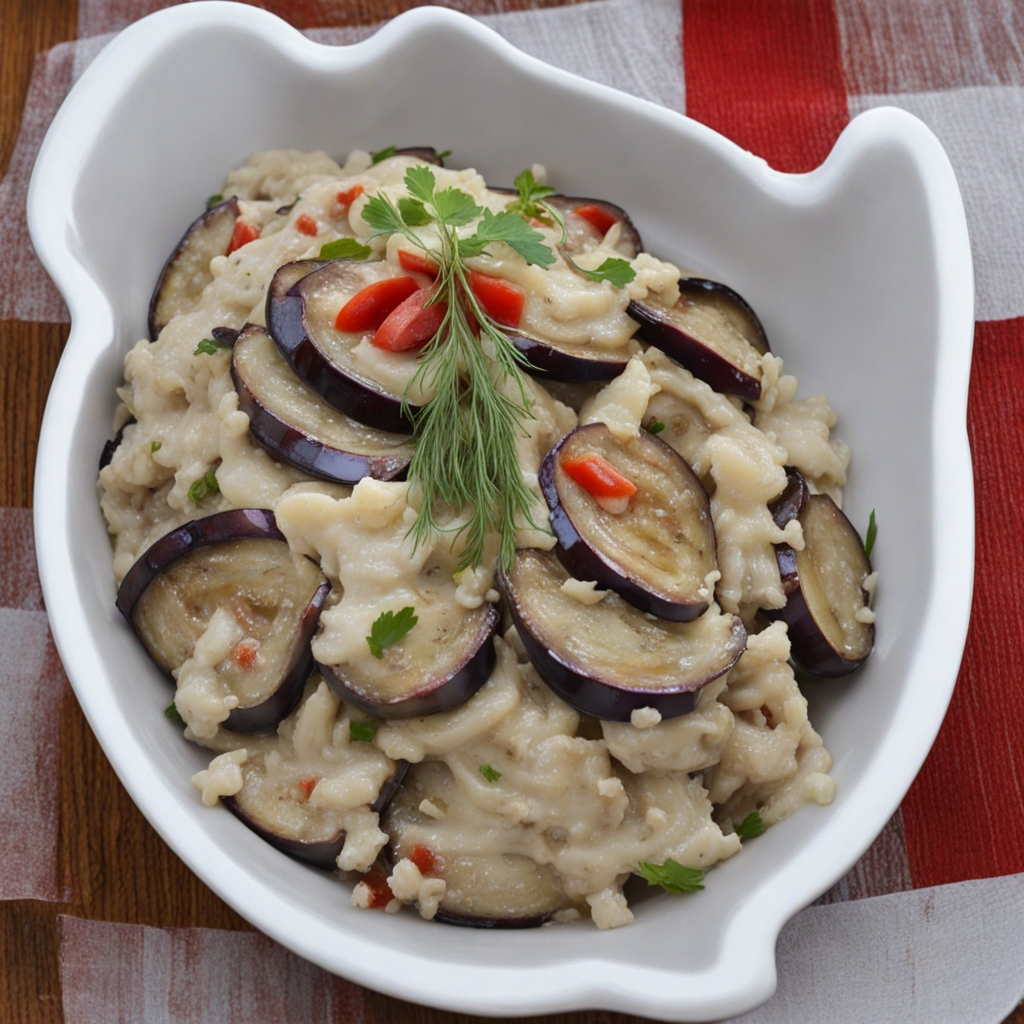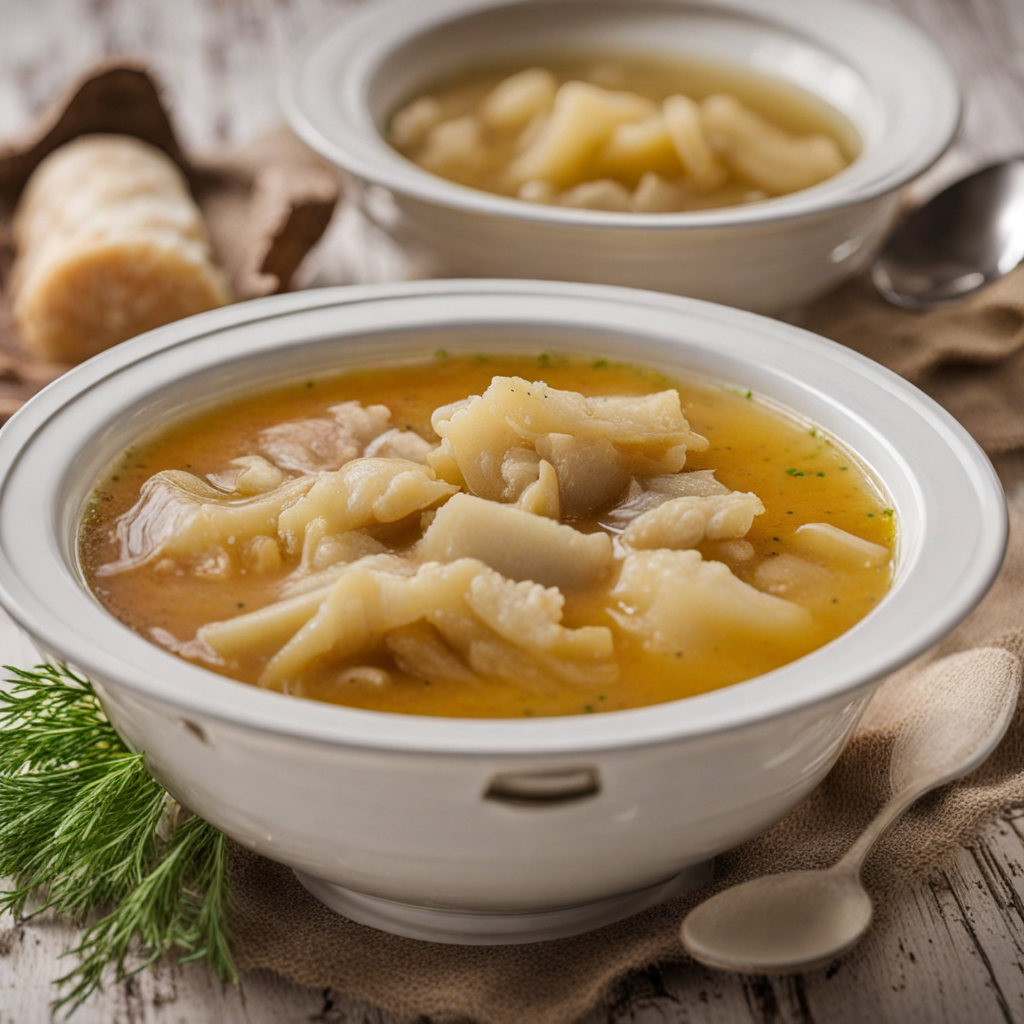Walnut Roll
Walnut Roll, or "Ruladă cu Nuci," is a beloved Romanian dessert that showcases the rich flavors and textures of walnuts in a unique and delightful way. This sweet treat features a soft, sponge-like cake rolled around a luscious filling made primarily of finely ground walnuts, sugar, and often a hint of vanilla or rum for added depth. The cake itself is typically light and airy, providing the perfect contrast to the dense, nutty filling that bursts with flavor in every bite. The combination of these elements creates a pleasing harmony that is both comforting and indulgent, making it a popular choice for celebrations and family gatherings. The preparation of Walnut Roll is an art in itself, as the cake must be baked to perfection, ensuring it can be easily rolled without cracking. Once the cake is cooled, a generous layer of the walnut mixture is spread across the surface, then carefully rolled up into a log shape. The roll is often dusted with powdered sugar or drizzled with chocolate for an elegant touch, enhancing both its visual appeal and flavor profile. This dessert not only showcases the rich agricultural heritage of Romania, where walnuts are abundant, but also reflects the country's baking traditions that have been passed down through generations. When you take your first bite of Walnut Roll, you'll be met with a delightful contrast of textures: the softness of the cake enveloping the crunchy, rich filling. The nutty aroma and flavor of the walnuts are complemented by the sweetness of the sugar, creating a balanced taste that is neither overly sweet nor bland. This dessert is often enjoyed with a cup of coffee or tea, making it a perfect treat for a cozy afternoon or a festive occasion. Discovering Walnut Roll is like unearthing a hidden gem of Romanian cuisine, inviting you to savor the exquisite marriage of flavors that tells a story of tradition, warmth, and hospitality.
How It Became This Dish
Ruladă cu Nucă: A Sweet Slice of Romanian Heritage #### Origins and Ingredients Ruladă cu nucă, or walnut roll, is a beloved dessert in Romanian cuisine, characterized by its soft, rolled sponge cake filled with a luscious walnut paste. The dish is emblematic of the rich culinary traditions that permeate Romanian culture, reflecting the country’s agricultural bounty and the influence of various culinary practices throughout its history. The origins of Ruladă cu nucă can be traced back to the late 19th and early 20th centuries, a period when Romania was undergoing significant social and cultural transformations. The availability of walnuts, a staple in Romanian cooking, played a crucial role in the development of this dessert. Walnuts have been cultivated in Romania since antiquity, symbolizing fertility and abundance. They are often featured in folklore and traditional celebrations, serving not just as a food source but also as a cultural emblem. #### Cultural Significance Ruladă cu nucă holds a special place in Romanian celebrations and family gatherings, often gracing the tables during festive occasions such as Christmas, Easter, and weddings. It is a dessert that evokes nostalgia, as many Romanians associate it with their childhoods, homemade kitchens, and the warmth of family gatherings. The preparation of the roll is often a communal affair, with families coming together to make the dough and filling, reinforcing bonds and shared traditions. In addition to its role in celebrations, Ruladă cu nucă embodies the Romanian spirit of hospitality. Offering a slice of this sweet treat to guests is a gesture of welcome and warmth, illustrating the importance of generosity in Romanian culture. The dessert is not merely a dish; it represents the values of family, community, and tradition, making it a cherished part of the Romanian culinary identity. #### Development Over Time As Romania navigated through the 20th century, its culinary landscape was influenced by various historical events, including wars, migrations, and political shifts. During the interwar period, the country saw an influx of culinary influences from neighboring regions, including Hungary, Austria, and Turkey. This melting pot of flavors and techniques contributed to the evolution of traditional dishes like Ruladă cu nucă. In the post-World War II era, Romania experienced a shift towards industrialization and urbanization, leading to changes in food availability and preparation methods. Traditional home-cooked meals began to make way for convenience foods, yet Ruladă cu nucă remained a staple in many households. The recipe for this walnut roll became a symbol of resilience, as families sought to maintain their culinary heritage amid changing times. During the 1980s, Romania faced economic hardships that affected food production and availability. Despite these challenges, Ruladă cu nucă continued to be made, often with adaptations based on what ingredients were accessible. The ability to substitute ingredients, such as using different types of nuts or sweeteners, reflects the adaptability of Romanian cuisine and the community’s dedication to preserving traditional recipes. #### The Recipe: A Labor of Love The preparation of Ruladă cu nucă is a labor of love that showcases the skill and patience of the cook. The basic recipe consists of a light sponge cake made from eggs, sugar, flour, and a pinch of salt. The egg whites are whipped to stiff peaks and folded into the yolk mixture, creating a fluffy batter that yields a delicate cake when baked. The filling is where Ruladă cu nucă truly shines. The walnut paste is made by finely grinding walnuts and mixing them with sugar, egg whites, and sometimes a hint of vanilla or rum for added flavor. This rich mixture is spread over the cooled sponge cake, which is then carefully rolled up to form a log. The roll is often dusted with powdered sugar or coated with a chocolate glaze, adding an extra touch of sweetness and elegance. #### Regional Variations While Ruladă cu nucă is widely recognized across Romania, regional variations do exist. In some areas, cooks might incorporate dried fruits, such as raisins or apricots, into the filling, adding a tangy contrast to the rich walnuts. Others may experiment with the dough, using flavored syrups or incorporating cocoa powder for a chocolate twist. Moreover, the dish transcends borders, with similar walnut rolls appearing in various Eastern European cuisines, including Hungary and Moldova. Each country boasts its own unique take on the recipe, often reflecting local customs and preferences. However, the essence of Ruladă cu nucă remains unchanged—a symbol of comfort, tradition, and the joy of sharing. #### Modern Interpretations In contemporary Romania, Ruladă cu nucă has found its way into bakeries, cafes, and restaurants, often served alongside coffee or tea. The dessert has also gained popularity among younger generations, who appreciate its nostalgic value while exploring modern twists on the classic recipe. Some bakers experiment with gluten-free or vegan versions, showcasing the dessert's versatility and appeal in a rapidly changing culinary landscape. Social media has played a significant role in revitalizing interest in traditional recipes like Ruladă cu nucă. Food bloggers and influencers share their personal takes on the dessert, inspiring a new generation to connect with their culinary heritage. This resurgence highlights the importance of preserving traditional dishes while allowing room for innovation and creativity. #### Conclusion Ruladă cu nucă is more than just a dessert; it is a testament to Romania's rich culinary tapestry, embodying the flavors, traditions, and communal spirit of its people. From its humble origins to its status as a cherished symbol of celebration, the walnut roll serves as a delicious reminder of the resilience and adaptability of Romanian cuisine. As families continue to gather around the dining table, sharing stories and memories over slices of Ruladă cu nucă, the dessert remains a sweet link to the past, a celebration of the present, and a promise of continuity for future generations. In every bite, one can taste the history, culture, and love that has gone into this timeless treat, making it an enduring favorite in Romanian hearts and homes.
You may like
Discover local flavors from Romania


